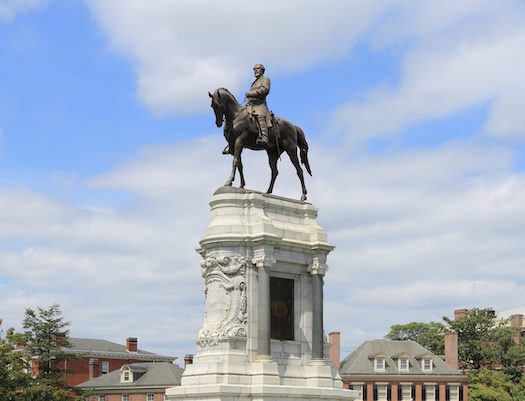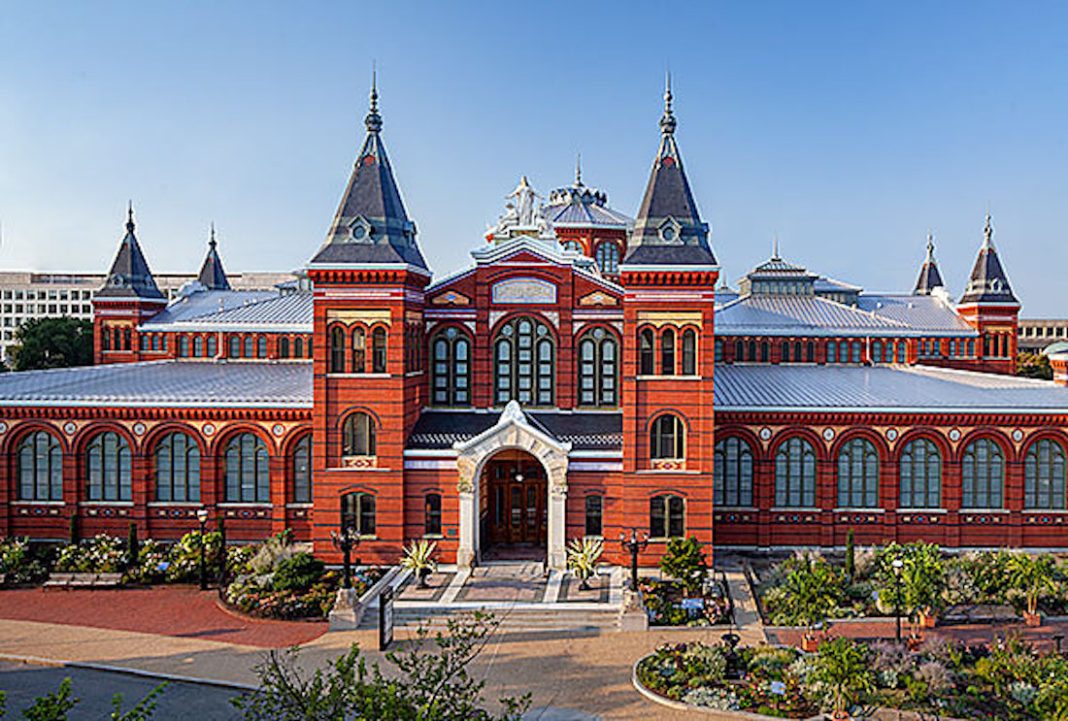“Restoring Truth and Sanity to American History” executive order mandates removal of
“improper, divisive, or anti-American ideology” from exhibits of Smithsonian Institution
Washington, D.C. — In a move that has left many in disbelief, President Donald Trump has signed an executive order mandating the removal of what he terms “improper, divisive, or anti-American ideology” from the exhibits of the Smithsonian Institution, the world’s largest museum complex.
The order, titled “Restoring Truth and Sanity to American History,” was signed on March 27, 2025, and places Vice President J.D. Vance, a member of the Smithsonian Institution’s Board of Regents, in charge of overseeing the changes.
The executive order specifically targets exhibits at the National Museum of African American History and Culture and the forthcoming American Women’s History Museum. The order asserts that “museums in our Nation’s capital should be places where individuals go to learn – not to be subjected to ideological indoctrination or divisive narratives that distort our shared history.”
Trump’s directive criticizes current exhibits for promoting “narratives that
portray American and Western values as inherently harmful and oppressive.”
One exhibit singled out is a display at the American Art Museum focused on race in sculpture, which the administration claims promotes a divisive narrative. Additionally, the order includes a prohibition on recognizing transgender women in the American Women’s History Museum, aligning with the administration’s stance on gender recognition.

Parallels with Hitler’s Nazi Reich
The Reich Culture Chamber (Reichskulturkammer), established in 1933, was a Nazi organization that played a central role in implementing Nazi cultural policy and promoting Aryan values in the arts and media.
Hitler and the Nazis emphasized “Aryan values” in their cultural institutions. Art was used as a propaganda tool to depict a strong and heroic Aryan race, glorifying the “Aryan” race and Nazi ideology.
The Nazis favored classical and realistic styles, rejecting modern art deemed “degenerate” and “un-German.”
In essence, the Reich Culture Chamber was a tool for the Nazi regime to enforce a specific aesthetic and cultural vision.
A vision that emphasized “Aryan supremacy, traditional values, and nationalistic fervor,” while simultaneously purging cultural life of dissenting voices and influences deemed undesirable
This suppression of “Degenerate” art, music, and literature included modern art movements like Expressionism, Dadaism, and atonal music, as well as works by Jewish artists or artists who opposed the regime.
The directive also calls for the restoration of Confederate-era monuments and statues that were removed or reinterpreted in the past five years, particularly those taken down following the 2020 protests after the death of George Floyd. The order suggests that the removal of nearly 100 Confederate statues during this period was part of a “revisionist movement” distorting American history.

Critics argue that this move represents an attempt to control historical narratives and curtail freedom of expression. They contend that the administration is seeking to erase diversity and rewrite history to fit conservative ideals.
This action follows similar initiatives by the Trump administration to influence cultural institutions, including changes at the Kennedy Center for the Performing Arts and the elimination of diversity, equity, and inclusion programs in various federal agencies.
Supporters of the executive order argue that it is necessary to prevent the spread of ideologies they view as divisive and unpatriotic.
They assert that museums should focus on celebrating American achievements and progress, rather than promoting narratives that they believe degrade shared American values.
The Smithsonian Institution, which includes 21 museums and the National Zoo, has not yet issued an official response to the executive order.
As the institution grapples with the implications of this directive, the broader cultural and academic communities continue to debate the role of museums in interpreting and presenting history in a manner that is both accurate and inclusive.
This unprecedented move by the Trump administration raises significant questions about the balance between governmental oversight and the independence of cultural institutions in shaping historical narratives. As the situation develops, it remains to be seen how these changes will impact the public’s understanding of American history and values.
#TrumpExecutiveOrder #SmithsonianChanges #MuseumIdeologyPurge #AmericanValues #CulturalPolicyShift #DivisiveNarratives #USPolitics
#NationalMuseums #HistoricalRevision #CulturalInstitutions
Tags: Trump administration, Smithsonian Institution, executive order,
J.D. Vance, museum exhibits, ideology removal, divisive narratives,
American values, cultural policy, national monuments
Discover more from The Stewardship Report
Subscribe to get the latest posts sent to your email.




